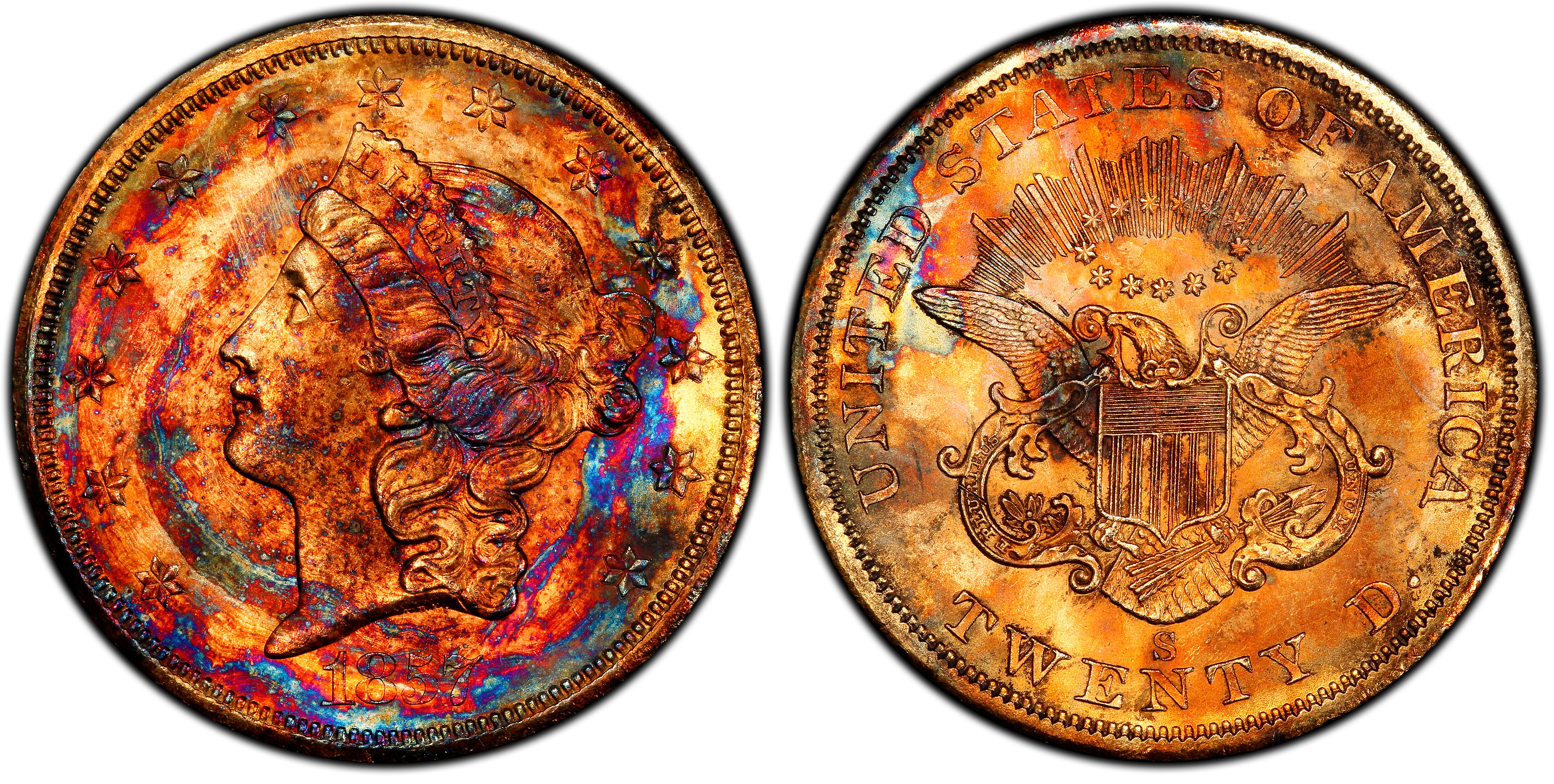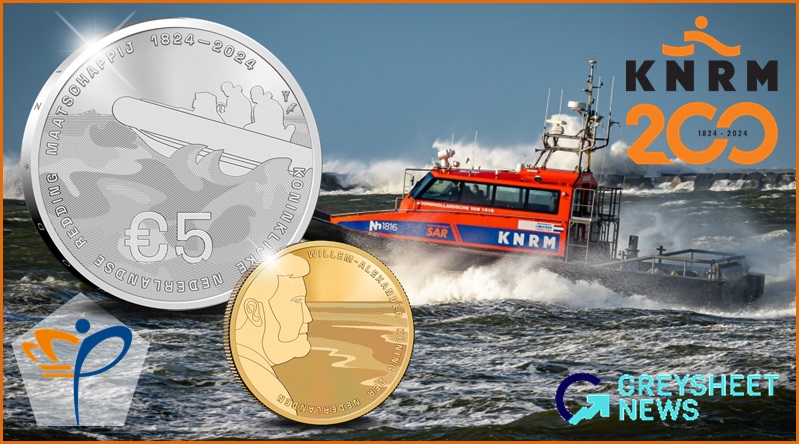Colorful 1857-S Double Eagle From SS Central America Treasure To Appear At ANA Philly Show
“Supernova” Double Eagle will be publicly displayed for the first time at the ANA World’s Fair of Money® in Philadelphia
Named the “Supernova,” an 1857-S double eagle with unique, mind-blowing toning was among the thousands of U.S. and world gold coins recovered during the last sunken treasure mission to the fabled “Ship of Gold,” the SS Central America, that sank in 1857. It will be publicly displayed for the first time at the American Numismatic Association 2018 Philadelphia World’s Fair of Money.
“It is the most beautifully toned gold coin ever seen! It has amazing blasts of colors never seen before on any gold coin, so we named it ‘Supernova’ after something truly cosmic,” exclaimed Dwight Manley, managing partner of the California Gold Marketing Group which acquired all of the treasure retrieved during the last recovery expedition in 2014. “If this were a San Francisco Mint Morgan dollar, it would sell for over 100 times bid,” Manley stated.
David Hall, co-founder of Professional Coin Grading Service (PCGS), stated: “The SS Central America ‘Supernova’ $20 is beyond amazing. The grade is ultra high, the color is off-the-charts and the originality and story are awe inspiring. Talk about the ‘WOW’ factor! It is one of the most amazing U.S. gold coins I’ve ever seen.”
Now graded PCGS MS67, the coin displays a mixture of vibrant red and deep blue hues over much of its lustrous gold obverse surface as well as remarkable blue and red toning on the reverse. It will be displayed during the ANA convention at Booth #225 along with other SS Central America treasure, including the finest-known “San Francisco Mint denomination set” for $1, $2.50, $3, $5, $10, and $20 gold pieces with the finest-known Liberty Head double eagle, graded PCGS MS67+.
“This toning, which is undeniably spectacular, is also natural. There was no artificial agent involved in the production of the colors. It is just the way we found it and recovered it from the seabed,” explained geologist Bob Evans, the chief scientist on the 1980s mission that first located and recovered a portion of the fabulous sunken treasure and who assisted with the 2014 recovery.
“It was discovered in the commercial shipment area near the stern of the shipwreck where there were piles and even rolls or stacks of coins, originally part of boxes of double eagles being shipped to New York by San Francisco businesses. This coin almost certainly was part of the commercial shipment. Very local, site-specific chemistry can occur in such conditions, where thousands of coins were deposited when the ship went down,” Evans stated.
“You can ponder the complicated chemistry, physics, and mathematics involved, or you can just step back and say, ‘Wow! Beautiful! That’s an amazing coin!’”
Evans offered this explanation for those who want to ponder the science of the toning on the 1857-S double eagle: “A sub-microscopically thin layer of an unknown mineral adhered to the surfaces of this coin, a layer only about as thick as the wavelength of visible light and varying ever so slightly. Such slight variations in the thickness of very thin media contribute to the phenomenon we know as coin toning. Light is reflected from both the top surface and the bottom surface (against the coin) of this very thin medium — the mineral layer — and the resulting interplay splits parts of the light beam. It’s what optical physicists call interference colors. You sometimes see such rainbow toning in the thin layers of sulfides and other compounds forming on silver coins where the chemistry of the coin itself is involved,” he explained.
“Far rarer is the case here, where outside minerals came in contact with the face of an inert gold coin. These kinds of colors also can be seen in the greens, purples and other hues emanating from soap bubbles, in the rainbow effects near the edge of an oil slick on a puddle of water, and in the internal ‘fire’ of opals.”
Evans will be at the SS Central America treasure exhibit each day during the show to meet with visitors. At 11 am on Friday, August 17, he will present a lecture, “The Many (and New) Treasures of the SS Central America: Revelations & Stories from the 2014 Recoveries,” in Room 121B of the convention center. The legendary ship sank in the Atlantic Ocean during a September 1857 hurricane while carrying tons of California Gold Rush gold from Panama to New York City.
The California Gold Marketing Group LLC of Brea, California, acquired the 2014 treasure from Ira Owen Kane, Receiver for Recovery Limited Partnership and Columbus Exploration, LLC in a court-approved transaction in November 2017. In 1999, the group acquired all of the available treasure that was recovered in the 1980s.

Download the Greysheet app for access to pricing, news, events and your subscriptions.
Source: CDN Publishing











